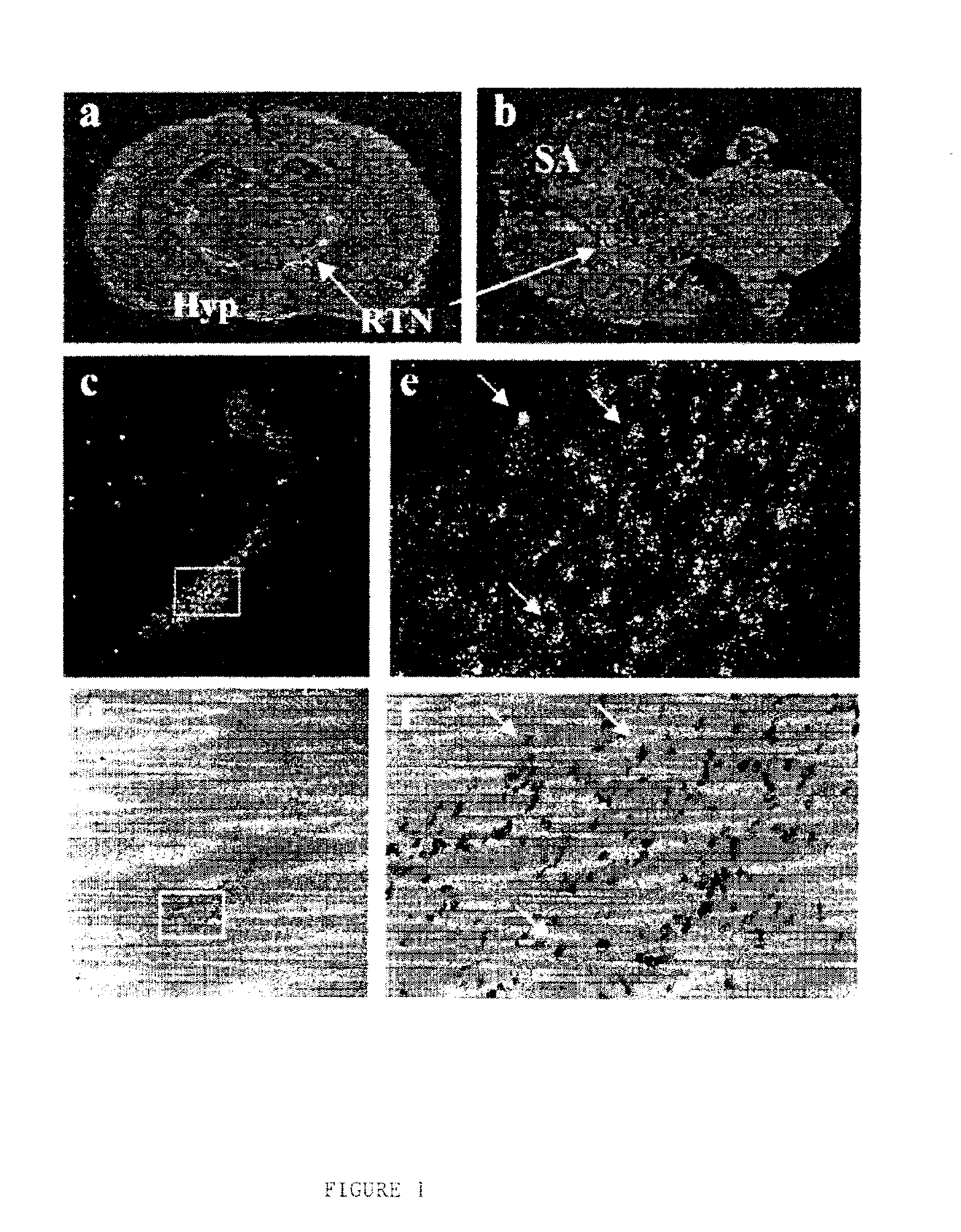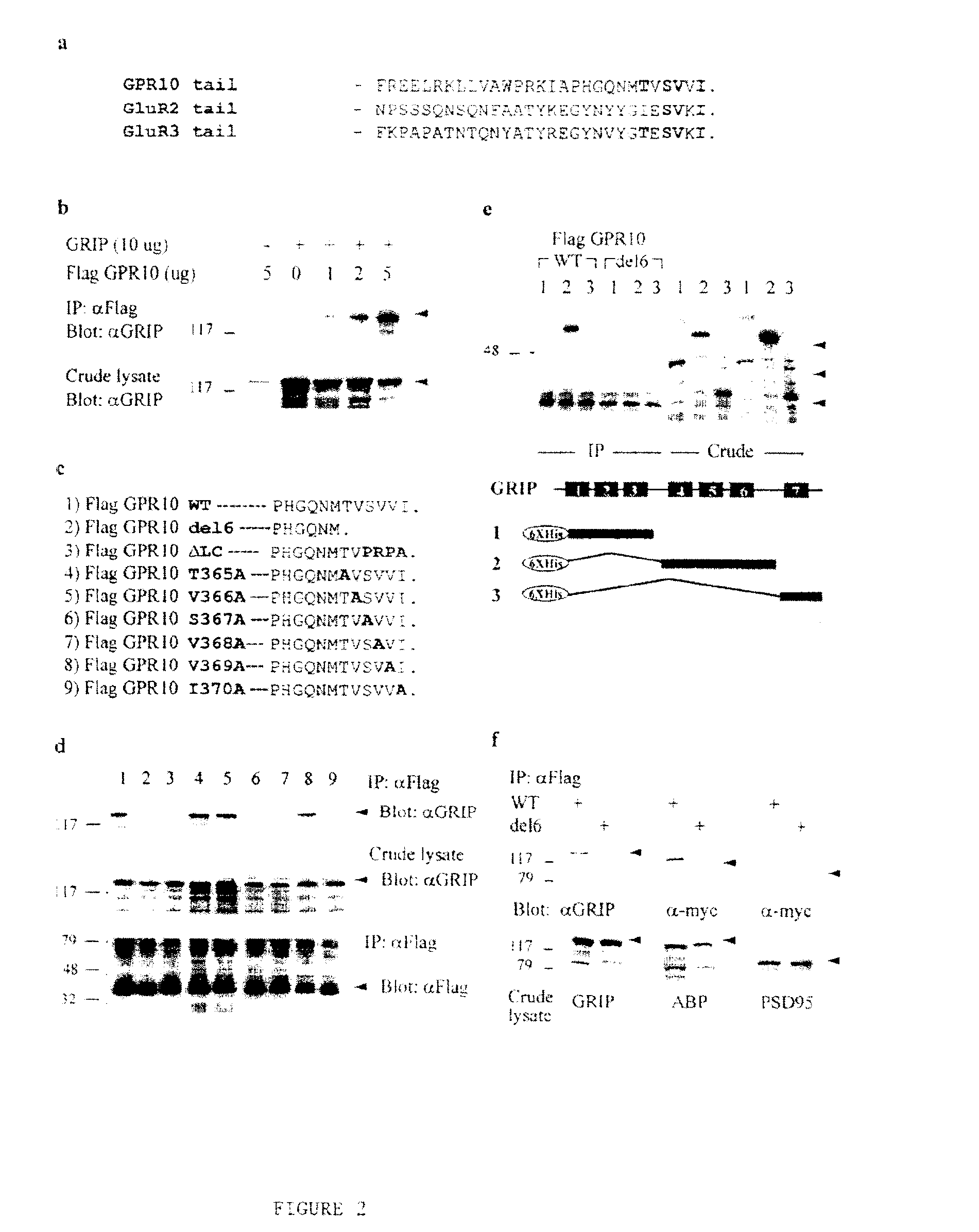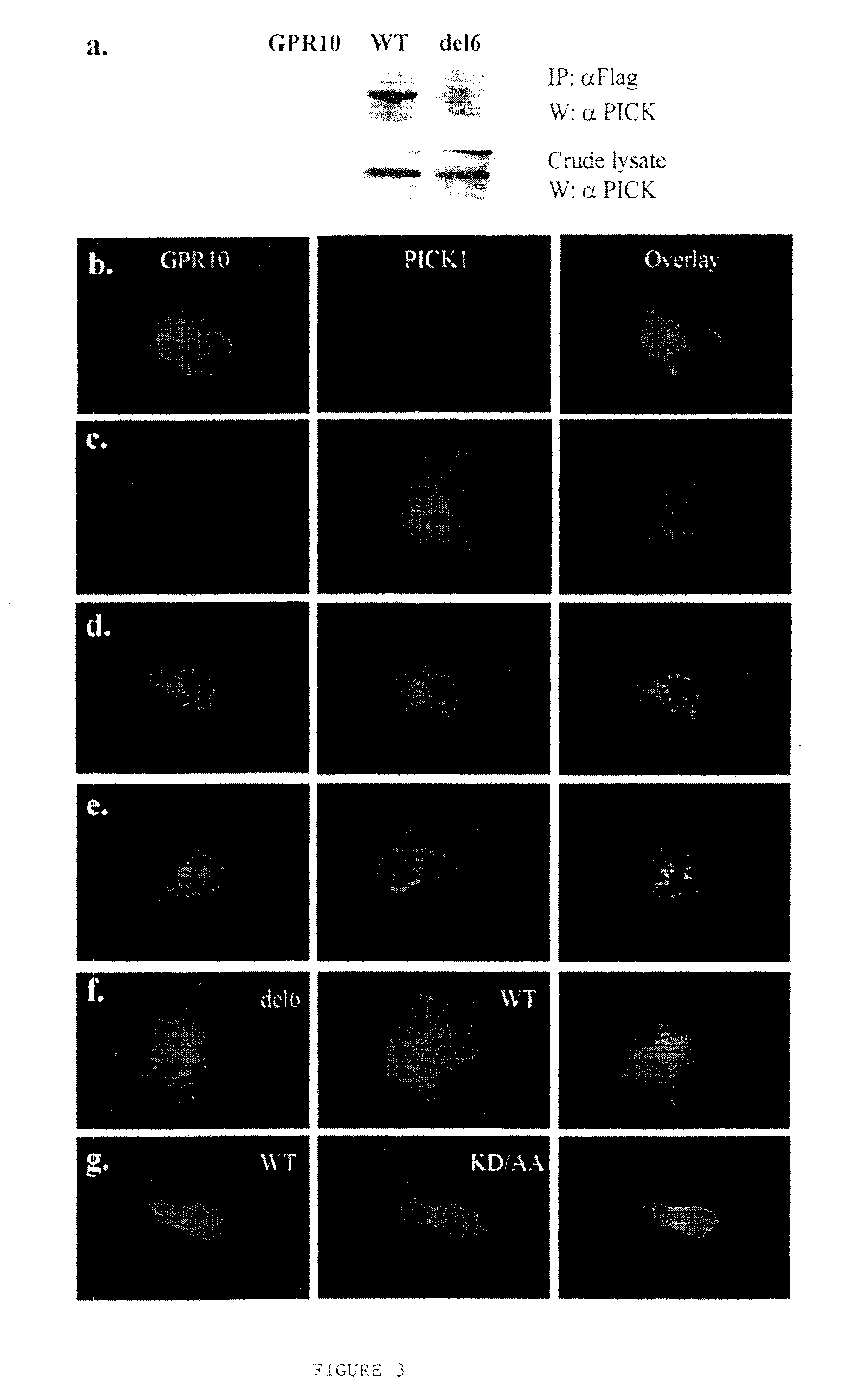Screening and therapeutic methods for promoting wakefulness and sleep
a technology of wakefulness and sleep, applied in the field of medicine, can solve the problems of reducing the ability to retain new information, affecting productivity, lowering the resistance to infection, etc., and achieves the effects of reducing the binding of prrp receptor agonists to prrp receptors, promoting interaction of prrp receptors, and reducing the binding of prrp receptor agonists
- Summary
- Abstract
- Description
- Claims
- Application Information
AI Technical Summary
Benefits of technology
Problems solved by technology
Method used
Image
Examples
example i
Localization of GPR10 in the Rat Brain
[0171]This example shows the distribution of GPR10 mRNA in the brain, and particularly shows that GPR10 is highly expressed the GABAergic neurons of the RTN.
[0172]Previous studies using Northern blot analysis have demonstrated that the receptor for PrRP, GPR10 is highly expressed in the pituitary, but absent in the brain. In order to determine the expression pattern of GPR10 in the brain, the more sensitive approach of in situ hybridization analysis was used.
[0173]In situ hybridization was performed essentially as described in Winzer-Serhan et al., Brain Res. Brain Res. Protoc. 3:229-241 (1999), and Winzer-Serhan et al., J. Comp. Neural. 386:540-554 (1997). Briefly, adult Sprague-Dawley rat brains were quickly removed and placed in methylbutane cooled to −20° C. for 1 minute. Twenty micron frozen sections were thaw-mounted onto poly-L-lysine coated glass slides, fixed in 4% paraformaldehyde in 0.1 M PBS pH 7.4, dessicated and stored at −20° C. u...
example ii
Interaction of GPR10 with AMPA Receptor-Interacting Proteins
[0186]This example shows that GPR10 interacts with GRIP-like proteins through its cytoplasmic tail, and forms clusters with PICK1.
[0187]An analysis of GPR10 sequence revealed that its carboxy-terminal tail contained a sequence motif of 4 amino acids (-SVVI) (SEQ ID NO:24) similar to those found in GluR2 and GluR3 subunits of AMPA receptors (FIG. 2A). The sequence -SVXI (X=any amino acid) has been shown to be critical for the binding of AMPA receptors to GRIP (Dong et al., Nature 386:279-284 (1997)), ABP (AMPA binding protein, also designated GRIP2) (Srivastava et al., Neuron 21:581-591 (1998); Dong et al., J. Neurosci. 19:6930-6941 (1999)), and PICK1 (Xia et al., Neuron 22:179-187 (1999)). GRIP, ABP and PICK1 are PDZ domain proteins which have been shown to be important for the proper targeting and scaffolding of AMPA receptors to the postsynaptic density (Craven et al., Cell 83:495-498 (1998); O'Brien et al., Curr. Opin. N...
example iii
Effect of PrRP on Thalamic Oscillatory Activity
[0199]This example shows that PrRP reduces AMPA receptor-mediated, but not NMDA receptor-mediated, thalamic oscillatory activity.
[0200]Given that GPR10 interacts with AMPA receptor associated molecules it was postulated that GPR10 receptor activation may affect AMPA receptor signaling. Such an effect would most likely influence oscillatory activity produced in the RTN since glutamatergic inputs are critical for maintaining this network function (Salt et al., Prog. Neurobiol. 48:55-72 (1996)). To test this hypothesis, extracellular recordings were made from the RTN in thalamic slices.
[0201]Horizontal thalamic slices (400 μm) were prepared from Sprague-Dawley rats (postnatal rats 13-15) using a vibratome (Leica, VTlOOOS). The slices were transferred to a recording chamber after at least 1 hr recovery, and were superfused with artificial cerebrospinal fluid (aCSF) equilibrated with 95% 02 / 5% CO2 at 0.5 ml / mm. The aCSF contained (in mM): Na...
PUM
| Property | Measurement | Unit |
|---|---|---|
| frequency | aaaaa | aaaaa |
| pH | aaaaa | aaaaa |
| temperature | aaaaa | aaaaa |
Abstract
Description
Claims
Application Information
 Login to View More
Login to View More - R&D
- Intellectual Property
- Life Sciences
- Materials
- Tech Scout
- Unparalleled Data Quality
- Higher Quality Content
- 60% Fewer Hallucinations
Browse by: Latest US Patents, China's latest patents, Technical Efficacy Thesaurus, Application Domain, Technology Topic, Popular Technical Reports.
© 2025 PatSnap. All rights reserved.Legal|Privacy policy|Modern Slavery Act Transparency Statement|Sitemap|About US| Contact US: help@patsnap.com



